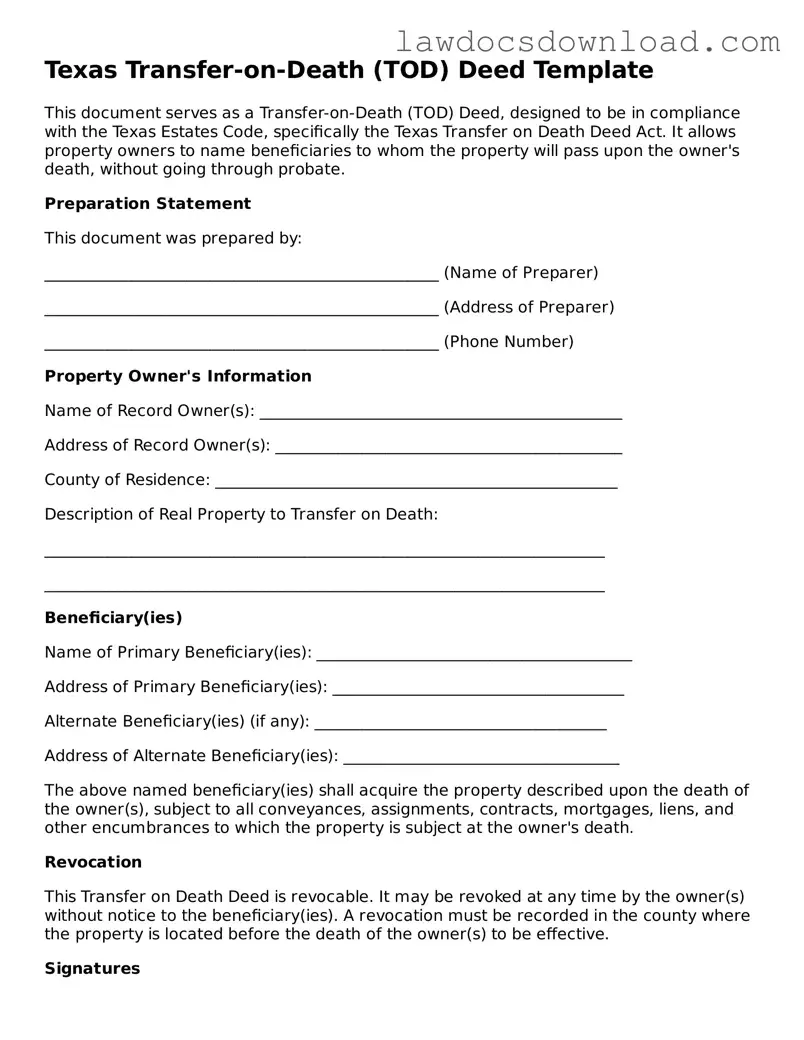Texas Transfer-on-Death (TOD) Deed Template
This document serves as a Transfer-on-Death (TOD) Deed, designed to be in compliance with the Texas Estates Code, specifically the Texas Transfer on Death Deed Act. It allows property owners to name beneficiaries to whom the property will pass upon the owner's death, without going through probate.
Preparation Statement
This document was prepared by:
__________________________________________________ (Name of Preparer)
__________________________________________________ (Address of Preparer)
__________________________________________________ (Phone Number)
Property Owner's Information
Name of Record Owner(s): ______________________________________________
Address of Record Owner(s): ____________________________________________
County of Residence: ___________________________________________________
Description of Real Property to Transfer on Death:
_______________________________________________________________________
_______________________________________________________________________
Beneficiary(ies)
Name of Primary Beneficiary(ies): ________________________________________
Address of Primary Beneficiary(ies): _____________________________________
Alternate Beneficiary(ies) (if any): _____________________________________
Address of Alternate Beneficiary(ies): ___________________________________
The above named beneficiary(ies) shall acquire the property described upon the death of the owner(s), subject to all conveyances, assignments, contracts, mortgages, liens, and other encumbrances to which the property is subject at the owner's death.
Revocation
This Transfer on Death Deed is revocable. It may be revoked at any time by the owner(s) without notice to the beneficiary(ies). A revocation must be recorded in the county where the property is located before the death of the owner(s) to be effective.
Signatures
This document must be signed by the property owner(s) and notarized to be effective.
__________________________________________________ (Owner's Signature)
__________________________________________________ (Date)
State of Texas
County of ________________________________
Subscribed and sworn to before me this____ day of _______________, 20___.
______________________________________
Notary Public, State of Texas
My Commission Expires: _________________
This Transfer-on-Death Deed must be recorded with the county clerk of the county where the property is located before the owner's death to be effective.
